Kenneth Atchity's Blog, page 28
September 29, 2023
Therapist Dennis Palumbo on the Writer’s Inner Life

This is from an interview for Shrink Rap Radio:
Initially, when you start writing, or at least when I started writing, you think the reward is, wow! It’ll be so great to see my words on screen, to see my name on screen…
I think what happens over time when, because you’re a writer – especially once I became a screenwriter – you’re very powerless as a screenwriter.
And what happens – and it’s a subtle change, but I think it’s the one that most mature writers go through – is the gratification becomes personal… the process of writing becomes its own reward… you tell the story the way you want to tell the story, and then hope for the best…
The frustration, I think, boils down to the fact that I believe screenwriters are the most crucial aspect of a movie, and they’re the ones with the least power and the least control.
Continued in article Therapist to the Hollywood Stars.
September 27, 2023
Kevin Spark's Novel id Receives Literary Titan Book Award
 The Literary Titan Book Awards are awarded to books that have astounded and amazed us with unique writing styles, vivid worlds, complex characters, and original ideas. These books deserve extraordinary praise, and we are proud to acknowledge the hard work, dedication, and writing talent of these brilliant authors.
The Literary Titan Book Awards are awarded to books that have astounded and amazed us with unique writing styles, vivid worlds, complex characters, and original ideas. These books deserve extraordinary praise, and we are proud to acknowledge the hard work, dedication, and writing talent of these brilliant authors.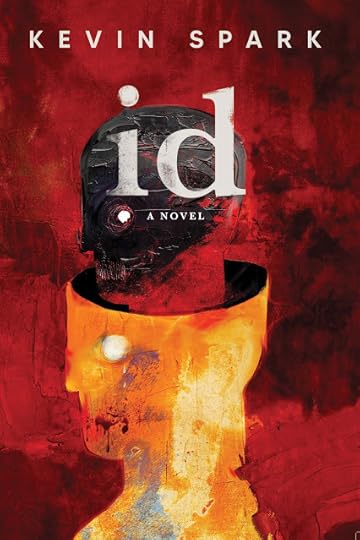
Available on Amazon
Dr. Shelly, a brilliant psychologist, forever haunted by her father and his murderous past, is driven by the need to find out why we do the things we do? Is the concept of free will just a concept and nothing more, a construct that blinds us to a less palatable truth, that who we are is predetermined and encoded at birth? Does anyone really choose to do the bad things we do or are we just doing what comes naturally?
Shelly constructs an experiment using a sensory darkest part of ourselves, the id, to run free. deprivation tank and virtual reality, allowing the Unencumbered by morality or remorse, Shelly finds the perfect subject in Adam. A borderline psychotic born into a world of neglect and crime. Delving into the deepest pits of his subconscious, Shelly surfaces with far more than she bargained for.
Detective Hopper, responsible for Adam’s capture, remains a broken man. After suffering a breakdown due to the escalation of his own violent behavior, he is placed under the care of Dr Shelly. Encouraging him to go looking for his own redemption, Hopper becomes a pawn in her web of deception until the lines of reality are redrawn as Hopper and Adam come full circle to an explosive end.
September 25, 2023
How Many More Meg Movies Jason Statham Can Make Based On The Books
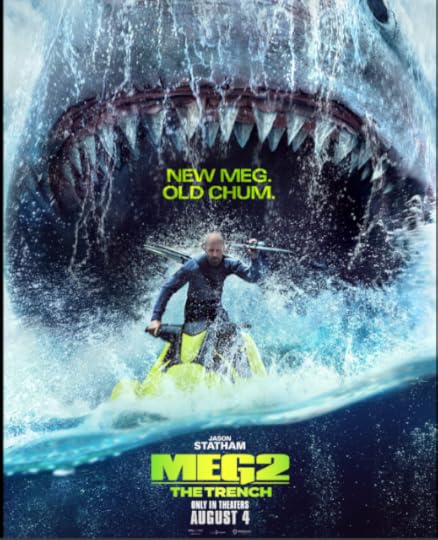
The first two Meg adapt Steve Alten's books of the same name. Here's a breakdown of how many more books the franchise can adapt in future installments.
The Meg movie series takes creative liberties with Steven Alten's book series, including changes to romantic aspects and the Megalodon's name, but stays true to the primary story developments.
The Meg movie series takes creative liberties with Steven Alten's book series, including changes to romantic aspects and the Megalodon's name, but stays true to the primary story developments.
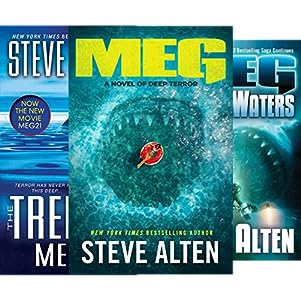
Jason Statham's first Meg movie adapted the first book, and there are still six more books in Alten's series that could be adapted for future movies.
Despite mixed reviews, the success of Meg 2: The Trench at the box office indicates a likelihood of Meg 3 and more movies in the franchise, potentially including other novels in the same universe.
The first Meg movie adapted Steve Alten's first novel, Meg: A Novel of Deep Terror, which was published in 1997. Meg 2: The Trench took on the story of the second installment in Steve Allen's Meg book series. Since the second book's release in 1999, Steven Allen has written five new Meg novels: Meg: Primal Waters (2004), Meg: Hell's Aquarium (2009), Meg: Origins (2011), Meg: Nightstalkers (2016) and, Meg: Generations (2020). An eighth installment for the book series, Meg: Purgatory, is also scheduled to be released in 2024, leaving six books worth of source material content for future Meg movies.
via Screen Rant
September 18, 2023
Publishers Weekly's Book Life Reviews Eric Burns New Book When the Dead Talked... and the Smartest Minds in the World Listened

Historian Burns (author of 1920: The Year That Made the DecadeRoar) illuminates the story of psychics, seances, and the scientists whoresearched them in When the Dead Talked. Roughly covering the 1840s to the1920s, Burns puts his talents as a researcher to use to recount the history ofspiritualism, from the famous Fox sisters—entrepreneurial spiritualists whoselate-in-life claims to have been deceptive Burns doesn’t quite buy—to ThomasEdison’s attempts to build a machine for communicating with the dead. Burnsdives deeply into two scientific societies which attempted to prove the truthor fallacy of claims of communication with the dead, the Society for PsychicalResearch in England and its Ameican counterpart.
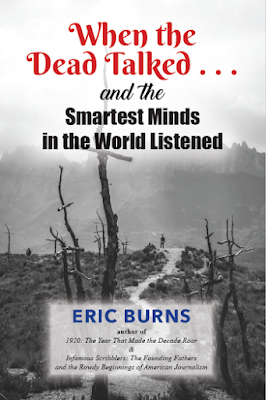 Burns concludes that their efforts,which ascribed validity to some psychic phenomena, deserve to be takenseriously today, arguing “To accept the notion that the smartest minds in theworld, thousands of them, engaged in a conspiracy to delude lesser minds is amore preposterous assumption than accepting the veracity of the feats” of thespiritualists. Readers may not be as convinced as Burns of the validity ofseveral of the phenomena that he recounts, even as he attempts to disprovecommon objections and appeals to the scientific probity of the investigators.But his expertise and skill as a historical storyteller is clearthroughout. When the Dead Talked…
Burns concludes that their efforts,which ascribed validity to some psychic phenomena, deserve to be takenseriously today, arguing “To accept the notion that the smartest minds in theworld, thousands of them, engaged in a conspiracy to delude lesser minds is amore preposterous assumption than accepting the veracity of the feats” of thespiritualists. Readers may not be as convinced as Burns of the validity ofseveral of the phenomena that he recounts, even as he attempts to disprovecommon objections and appeals to the scientific probity of the investigators.But his expertise and skill as a historical storyteller is clearthroughout. When the Dead Talked… Burns’s deep research is combined with a familiar tone which welcomes the readeris extensively researched,with helpful bibliography and glossary, plus photos of his principal subjects,the psychics and skeptics who investigated them. to participate in the same journey that he himselfdid from skepticism to openness to the reality of psychic phenomena. Readersfascinated by how scientists in the last half of the 19th century thought aboutpsychic phenomena will appreciate Burns’s exploration of this fascinatinghistory. Fascinating study of spiritualism and the scientists who found itcredible.
 Veteran and Emmy-winning broadcaster turnedprolific author, Eric Burns, has thoroughly explored the topic with hiswell-researched When the Dead Talked … and the Smartest Minds in the WorldListened, published by Story Merchant Books. Burns has retained The BlaineGroup to implement a national public relations campaign to support this book’slaunch.
Veteran and Emmy-winning broadcaster turnedprolific author, Eric Burns, has thoroughly explored the topic with hiswell-researched When the Dead Talked … and the Smartest Minds in the WorldListened, published by Story Merchant Books. Burns has retained The BlaineGroup to implement a national public relations campaign to support this book’slaunch.
September 15, 2023
'Meg 2: The Trench' Makes Another Small Nibble in the Global Box Office
Another epic sequel is surely inevitable now.
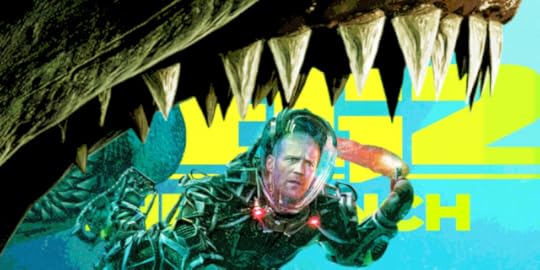
THE BIG PICTURE Meg 2: The Trench has made enough money at the box office to almost guarantee a third installment of the prehistoric underwater adventure. Jason Statham brings his usual charm as the tough main character, Jonas Taylor, and his thrilling action scenes steal the show. The film's international success and profitability make it a sensible decision for Warner Bros. to continue the franchise, as the demand for the movie is clear.
Meg 2: The Trench may be starting to swim in shallower waters at the worldwide box office, but the movie has taken enough of a financial chunk from audiences to all but assure a third installment of the prehistoric undersea nonsense, should it be so desired. In its sixth week of release, the movie brought in another $3.6 million from 77 overseas markets to bring its international total to $304.2 million, giving the movie a global running tally of $384.9 million.
‘Meg 2: The Trench’ Budget Breakdown: How the Film Became a Box Office Hit

Cast
Once again fighting off prehistoric sharks is rough and gruff monster hunter Jonas Taylor, played once again by Fast & Furious franchise star Jason Statham. Ever since his breakout roles in Guy Ritchie's Lock, Stock and Two Smoking Barrels and Snatch, Statham has become a power player in the action world, starring in hits like The Transporter, The Italian Job, Crank, The Expandables, Fast & Furious 6, and more. This successful career has led to Statham having a net worth of about $90 million, which is more than half of the total budget for Meg 2: The Trench. Statham was more than likely paid more than his co-stars, likely around a minimum of $20 million.
Joining Statham are some returning allies from the first film, including Shuya Sophia Cai (Somewhere Only We Know) as Meiying, Cliff Curtis (Avatar: The Way of Water) as Mac, and Page Kennedy (S.W.A.T.) as DJ. Joining the Meg universe for the sequel is major Chinses film star Jing Wu, best known for films like The Wandering Earth and Wolf Warrior. The new cast is then rounded out by Sergio Peris-Mencheta (Resident Evil: Afterlife), Skyler Samuels (The Gifted), and Melissanthi Mahut (The Other Me). For the major cast members, the final price tag is likely somewhere around $40 million.
VFX
As significant as the leading actor Jason Statham is, the undisputed star of this franchise is the titular Megalodon. This time, however, Jonas Taylor faces off against not one, not two, but three colossal Great White Megalodons (plus a giant squid). Despite being a goofy movie about big sharks, the original film's VFX team took incredible care to make an anatomically correct and visually distinct Megalodon. That task is essentially tripled in Meg 2: The Trench, though the reported budget for the sequel is actually a million dollars less than its predecessor.
Filming Locations
Believe it or not, the cast and crew of Meg 2: The Trench did not actually travel to the depths of the ocean to film the blockbuster sequel. The trench base and ocean floor sets were reportedly created at Warner Bros. Discovery's studio in Burbank. Exterior shots were also conducted in China and Thailand.
The Costs of Promoting Meg 2: The Trench
Warner Bros. Discovery had their work cut out for them when marketing Summer's most prominent film, Barbie. That's not to say that Meg 2: The Trench got wholly left out, with a marketing campaign beginning about two months before its theatrical release. The series also got positive marketing synergy thanks to Discovery's annual Shark Week event. Overall, marketing campaigns for blockbusters like Meg 2: The Trench has a minimum advertising budget of $65 million, which is not included in the production budget.
How Much Does Meg 2: The Trench Need to Make to Break Even?
The total reported budget for Meg 2: The Trench is reportedly $129 million, which is about $1 million less than what The Meg costs to make. With a budget of $129 million and a marketing budget that likely ranges from $65 million to $100 million, Meg 2: The Trench will need to make somewhere between $194 million and $229 million to break even. Meg 2: The Trench will likely need to make $388 million to $458 million at the international box office to be considered a financial success.
While Barbenheimer's unprecedented success at the box office and prevented Meg 2: The Trench's opening weekend from being a total feeding frenzy, the shark sequel still took a considerable chomp in its theatrical debut. With a domestic take of about $35 million and a massive international total of over $145 million, Meg 2: The Trench has already made back its production budget and will likely break even as early as its second theatrical weekend. As of now, the film has made $384.9 million worldwide. A great hold considering not only competing with Barbie and Oppenheimer but also the likes of the superhero film Blue Beetle and the sports biopic Gran Turismo.
How Do Meg 2: The Trench's Box Office Projections Compare to Other Summer 2023 Blockbusters?
Summer 2023 has been an unusual season for the box office. Big-budget films like The Flash, Indiana Jones and the Dial of Destiny, and Haunted Mansion became unprecedented box office bombs, potentially losing more than a billion considering their budget.
Thankfully, Barbie and Oppenheimer came in to create an incredible double feature combo, shattering records with Barbie crossing the billion-dollar milestone and Oppenheimer repeatedly extending its 70mm theatrical run. While Meg 2: The Trench probably won't catch up to that dynamic duo, it's still looking like it will be one of the more impressively profitable films of this unusual blockbuster season.
via collider
September 11, 2023
Denise Griffitts Interviews Robert Rivenbark - AI Avatar Book Reviews

LISTEN
The Cloud: Pioneering AI Avatar-Reviewed Novel Sets New Literary Milestone
Robert Rivenbark's "The Cloud" introduces AI avatars as literary reviewers, blurring the boundary between human imagination and machine intelligence. As technology continues to reshape literature, this novel endeavor prompts questions about avatar creation, liner note utilization, and software prompts. "The Cloud" stands as a testament to the evolving relationship between human creativity and AI's limitless potential.
AI-generated book reviews spark several intriguing inquiries:
How are the AI avatars brought to life?
Do book liner notes serve as a foundation for the avatars' insights?
What prompts the software to craft these reviews?
This literary first is opening the door to AI avatar book reviews. This mixes human creativity with AI's abilities in an exciting way. With questions about making avatars, using summaries, and guiding AI, this achievement shows how AI and human imagination are shaping the future of literature.
Find Robert Rivenbark's "The Cloud" on Amazon
September 8, 2023
Of Course, The Meg 2 Director Learned From Jaws While Making The Shark Flick, And His Description Of Steven Spielberg’s Age When He Did It Is Sticking With Me
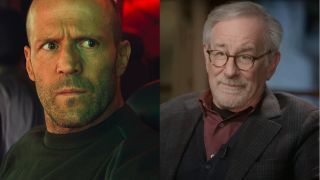 (Image credit: Warner Bros/CBS)
(Image credit: Warner Bros/CBS)When drawing inspiration for a movie like Meg 2: The Trench, it helps to seek out the classics. So naturally, director Ben Wheatley considered the entertainments of the classic summer blockbuster Jaws as he looked for lessons on what to do with his own entry into the aquatic horror-comedy canon. What’s even more interesting to read is how Wheatley described director Steven Spielberg when he made the 1975 movie, which is undoubtedly an explanation that’s going to stick with me for a while.
During an interview with Slashfilm promoting the Jason Statham-fronted sequel, the High Rise director put a lot of influences on the table. That led to this rundown of where his inspirations came from, including a portrait of Spielberg that most people probably forgot.
Yeah, I mean, obviously I’m a fan of the Kaiju stuff and a fan of Gojira and then the later cycle of Godzilla movies like the ’70s stuff as well, and Harryhausen, Jason and the Argonauts, all that stuff. Obviously Jaws, which is not just a shark film, but one of the greatest films ever made for me. And a film I revisit a lot and re-watch, it’s a film that is a film school in itself. And to see that [Steven Spielberg] did it when he was 26 or whatever disgustingly young age he made that movie at, which is basically inventing it and so much stuff. I definitely looked at that.
At this point in his career, we see Steven Spielberg as the classic hit-maker who dances between dramas and blockbusters. However, people may forget the stories of how a young Spielberg bluffed his way onto the Universal lot, eventually paving the way to direct Jaws at the tender age of 26.
I’ll give you all a moment to sink into a rabbit hole dissecting what you were doing at that point in life, as that’s clearly what Ben Wheatley did during his Meg 2 prep. Also, I’m totally falling into that trap myself at the moment.
While I might not agree with the words “disgustingly young,” I do co-sign the fact that Spielberg invented the modern summer blockbuster. At the same time, try not coming with your own shocked nickname when watching the trailer for Jaws and remembering that it was directed by a 26-year-old.
Reading the various behind-the-scenes facts on Jaws that have been revealed over time backs that claim, as well as the fact that Mr. Wheatley’s claim that the Indiana Jones helmer was pretty much making it up with his crew as they went along. Not to mention, he was sinking ships with his actors on board long before it was cool... or totally intentional and safe.
Making a movie like Meg 2: The Trench isn’t as risky in this age, as directors like Ben Wheatley now have all the practical models and CGI effects their budget will allow. Reading how much Wheatley was looking to Jaws for inspiration, it totally explains the kickass jet ski scene with Jason Statham, and how it too involved some practical magic itself.
It just goes to show that no matter what age you are, you can be inspired to pull some stunts that even the masters themselves would be proud of. You can see such delights pretty easily, as Meg 2: The Trench is still in theaters, but you can also rent it on PVOD if you’d rather enjoy it in the comfort of your own home. Meanwhile, if you have got the urge to revisit Jaws and/or its handful of sequels, those of you with a Netflix subscription can do just that.
IMPROVE YOUR STORYTELLING WITH KEN ATCHITY!

Sign Up For This Brand New Online Course From Author And Hollywood Producer Ken Atchity Designed to Improve Your Storytelling.
Pay upfront or utilize our payment plan to pay as you learn!September 7, 2023
Robert Rivenbark's The Cloud is an Amazon Bestseller in Three Categories

The Cloud is the first novel in The Cloud trilogy. It’s also in development as a film or series with producer/literary manager Kenneth Atchity of Atchity Productions and Story Merchant. “When Everyone’s a Virtual Reality Slave, Who can Free the Human Soul?”
“The Cloud” is a terrifying vision of a possible future I hope we can avoid. It’s a cautionary tale with sexy, suspenseful thriller elements that will keep you turning pages, hoping for the hard-won redemption of the male and female protagonists, who face near-impossible odds.”



